|
|
|---|
Saturday, July 31, 2010
Wednesday, July 28, 2010
Tuesday, July 27, 2010
Acura 3.2 CL Type-S, 2001
Acura 3.2 CL Type-S, 2001



POWERTRAIN
The new CL coupe is offered exclusively with V-6 power and is available in two distinct versions of Acura's all-aluminum, 3.2-liter, 24-valve engine with the patented VTEC(TM) (Variable Valve Timing and Lift Electronic Control) system. The 3.2 CL's V-6 engine produces 225 horsepower and is similar to the engine in the popular Acura 3.2 TL luxury performance sedan. The Type S was designed for high performance driving with class leading technology and power. Producing 260 horsepower, the Type S is the most powerful six-cylinder coupe in its class. To achieve its high output, the Type S incorporates several engine enhancements including a dual-stage induction system, low-restriction dual-outlet exhaust, larger diameter throttle body, increased compression ratio, special intake valves, camshafts and cylinder heads. These elements allow the Type S to achieve a broad torque curve providing 232 lb-ft of torque between 3500 and 5500 rpm. Both the 3.2 CL and Type S engines feature a direct ignition system with knock control which ensures a properly timed spark for optimal power and fuel efficiency at all engine speeds. In addition, platinum-tipped spark plugs are used in both engines allowing a 100,000 mile tune up interval. Both CL models are equipped with a five-speed automatic transmission with the Formula 1 race car-inspired Sequential SportShift system, allowing the driver to select gear changes manually, or operate as an automatic transmission. The 5-speed gearing provides quick acceleration while reducing engine rpm at cruising speed, resulting in increased fuel efficiency and less engine noise compared to a 4-speed automatic transmission. The CL achieves luxury and performance while balancing Acura's commitment to the environment, as both the 3.2 CL and Type S models will be Low Emission Vehicles (LEV). The California model 3.2 CL will be an Ultra Low Emission Vehicle (ULEV) with further reduced emissions.
BODY AND CHASSIS
To complement the performance capabilities of the powertrain, the CL's chassis has been engineered with a rigid unit body structure to provide extraordinary handling that rivals Europe's finest luxury performance coupes. Compared to the car it replaces, the new CL is 6-percent stronger in torsional rigidity and 23-percent stronger in bending rigidity resulting in a solid ride with less body flex.
This rigid platform serves as the foundation for the CL's four-wheel independent, double wishbone suspension with stabilizer bars and a shock tower bar. The Type S incorporates additional suspension enhancements, including firmer springs, increased damping rates and a larger rear stabilizer bar for even greater cornering capability. Both CL models have large diameter, 4-wheel disc brakes with ABS to maximize stopping power of the high-performance, V-rated, all season Michelin tires -- 205/60R16 on 3.2 CL; 215/50R17 on Type S.
INTERIOR
The world class driving experience is also reflected in the CL's interior, as this new coupe has been equipped with a comprehensive array of comfort and convenience features. Interior appointments include an impressive Acura/Bose(R) six-speaker music system with six-disc, in-dash CD changer, Automatic Climate Control System with micron air filtration, power moonroof and leather-trimmed seating surfaces with four individual bucket seats. Heated power front seats with power walk-in feature, keyless remote entry with driver's seat and side mirror memory, front center console with adjustable armrest, HomeLink(R) remote control system along with front and rear dual cupholders round out this list of standard features. To further enhance its sporty personality, the Types S receives exclusive perforated leather seats and steering wheel, metallic-faced instrument panel and a Type S-badged perforated leather shifter knob. Type S with an ebony colored interior also receives a unique dark wood grained trim on the center console and doors.
The sophisticated, yet easy-to-use, global positioning system (GPS) satellite-linked navigation system is the only factory option available on both the 3.2 CL and the Type S. A pioneer in the area of in-dash navigation systems in North America, Acura is the first and the only luxury automobile brand to offer a Digital Versatile Disc (DVD) mapping database, providing coverage of the continental United States on a single DVD. The DVD database has been programmed to include over 3.7 million points of interest, while a large 6-inch color LCD display with a matte-finish touch screen reduces glare and fingerprinting.
SAFETY
Acura technology extends to the area of vehicle safety with the CL's extensive list of standard safety features. Both CL models are equipped with standard Xenon High Intensity Discharge (HID) headlights for excellent nighttime visibility, Antilock Braking System (ABS), Traction Control System (TCS) along with driver and front passenger Supplemental Restraint System (SRS) air bags with dual threshold deployment and a dual stage inflation system for the passenger's air bag. Side air bags for the driver and front passenger are also standard and incorporate a sophisticated occupant size and position sensor system on the passenger's seat, allowing the control module to shut off the passenger's side air bag if a child or small adult is leaning into the deployment path of the air bag. The Type S also adds a unique Vehicle Stability Assist (VSA) system that orchestrates the throttle, injection and brakes to seamlessly integrate traction control, antilock braking and stability control systems. This innovation is designed to assist the driver in maintaining control during cornering, acceleration and sudden collision-avoidance maneuvers by applying brake force to the right or left front wheel as necessary and managing the throttle and injection systems.
MANUFACTURING
The new CL is the third Acura to be designed, engineered and assembled in the United States. Like its Acura 3.2 TL sedan sibling, the new CL is assembled at Honda of America's manufacturing facility in Marysville, Ohio with a high level of locally sourced parts.
BODY AND CHASSIS
To complement the performance capabilities of the powertrain, the CL's chassis has been engineered with a rigid unit body structure to provide extraordinary handling that rivals Europe's finest luxury performance coupes. Compared to the car it replaces, the new CL is 6-percent stronger in torsional rigidity and 23-percent stronger in bending rigidity resulting in a solid ride with less body flex.
This rigid platform serves as the foundation for the CL's four-wheel independent, double wishbone suspension with stabilizer bars and a shock tower bar. The Type S incorporates additional suspension enhancements, including firmer springs, increased damping rates and a larger rear stabilizer bar for even greater cornering capability. Both CL models have large diameter, 4-wheel disc brakes with ABS to maximize stopping power of the high-performance, V-rated, all season Michelin tires -- 205/60R16 on 3.2 CL; 215/50R17 on Type S.
INTERIOR
The world class driving experience is also reflected in the CL's interior, as this new coupe has been equipped with a comprehensive array of comfort and convenience features. Interior appointments include an impressive Acura/Bose(R) six-speaker music system with six-disc, in-dash CD changer, Automatic Climate Control System with micron air filtration, power moonroof and leather-trimmed seating surfaces with four individual bucket seats. Heated power front seats with power walk-in feature, keyless remote entry with driver's seat and side mirror memory, front center console with adjustable armrest, HomeLink(R) remote control system along with front and rear dual cupholders round out this list of standard features. To further enhance its sporty personality, the Types S receives exclusive perforated leather seats and steering wheel, metallic-faced instrument panel and a Type S-badged perforated leather shifter knob. Type S with an ebony colored interior also receives a unique dark wood grained trim on the center console and doors.
The sophisticated, yet easy-to-use, global positioning system (GPS) satellite-linked navigation system is the only factory option available on both the 3.2 CL and the Type S. A pioneer in the area of in-dash navigation systems in North America, Acura is the first and the only luxury automobile brand to offer a Digital Versatile Disc (DVD) mapping database, providing coverage of the continental United States on a single DVD. The DVD database has been programmed to include over 3.7 million points of interest, while a large 6-inch color LCD display with a matte-finish touch screen reduces glare and fingerprinting.
SAFETY
Acura technology extends to the area of vehicle safety with the CL's extensive list of standard safety features. Both CL models are equipped with standard Xenon High Intensity Discharge (HID) headlights for excellent nighttime visibility, Antilock Braking System (ABS), Traction Control System (TCS) along with driver and front passenger Supplemental Restraint System (SRS) air bags with dual threshold deployment and a dual stage inflation system for the passenger's air bag. Side air bags for the driver and front passenger are also standard and incorporate a sophisticated occupant size and position sensor system on the passenger's seat, allowing the control module to shut off the passenger's side air bag if a child or small adult is leaning into the deployment path of the air bag. The Type S also adds a unique Vehicle Stability Assist (VSA) system that orchestrates the throttle, injection and brakes to seamlessly integrate traction control, antilock braking and stability control systems. This innovation is designed to assist the driver in maintaining control during cornering, acceleration and sudden collision-avoidance maneuvers by applying brake force to the right or left front wheel as necessary and managing the throttle and injection systems.
MANUFACTURING
The new CL is the third Acura to be designed, engineered and assembled in the United States. Like its Acura 3.2 TL sedan sibling, the new CL is assembled at Honda of America's manufacturing facility in Marysville, Ohio with a high level of locally sourced parts.
Infiniti FX35, 2003
Infiniti FX35, 2003




The Infiniti FX is a mid-size luxury crossover SUV. It is sold in two models: the FX35 and the FX45. Both were launched in 2003, the same time Lexus launched their GX 470. It replaced the QX4 as Infiniti's mid-size luxury SUV, despite being larger than its predecessor.
With the FX45 crossover, Infiniti sought to combine sports-car performance with SUV functionality. The FX45's 4.5 L V8 generates 315 hp (235 kW) and is coupled to a five-speed automatic transmission that incorporates a manual-shift mode. ATTESA E-TS All wheel drive is standard, and the FX45 has a sport-tuned four-wheel independent suspension. The FX35 uses a 3.5 L V6.
The FX series was updated for 2006 with new options and standard features. The FX35 now has leather seats, a power tilt/telescope steering wheel and a rear view camera with a color screen standard. The FX45's V8 engine was also uprated to 320 hp (239 kW) and it gets a standard sunroof, Bluetooth system, rear view camera with a color screen, and aluminum roof rails.
With the FX45 crossover, Infiniti sought to combine sports-car performance with SUV functionality. The FX45's 4.5 L V8 generates 315 hp (235 kW) and is coupled to a five-speed automatic transmission that incorporates a manual-shift mode. ATTESA E-TS All wheel drive is standard, and the FX45 has a sport-tuned four-wheel independent suspension. The FX35 uses a 3.5 L V6.
The FX series was updated for 2006 with new options and standard features. The FX35 now has leather seats, a power tilt/telescope steering wheel and a rear view camera with a color screen standard. The FX45's V8 engine was also uprated to 320 hp (239 kW) and it gets a standard sunroof, Bluetooth system, rear view camera with a color screen, and aluminum roof rails.
Engines
* 3.5 L VQ35DE V6
* 4.5 L VK45DE V8
Performance (FX45)
* 0-60 mph: 6.3 seconds
* 0-100 mph: 17.6 seconds
* 1/4 mile: 14.8 seconds at 95.1 mph
* 300 ft Skidpad: .89g
* Top Speed: 137 mph
Performance (FX35)
* 0-60 mph: 7.1 seconds
* 0-100 mph: NA
* 1/4 mile: 15.5 seconds at 91.0 mph
* 300 ft Skidpad: .89g
* Top Speed: 137 mph
* 3.5 L VQ35DE V6
* 4.5 L VK45DE V8
Performance (FX45)
* 0-60 mph: 6.3 seconds
* 0-100 mph: 17.6 seconds
* 1/4 mile: 14.8 seconds at 95.1 mph
* 300 ft Skidpad: .89g
* Top Speed: 137 mph
Performance (FX35)
* 0-60 mph: 7.1 seconds
* 0-100 mph: NA
* 1/4 mile: 15.5 seconds at 91.0 mph
* 300 ft Skidpad: .89g
* Top Speed: 137 mph
Monday, July 26, 2010
Audi Quattro, 1980
Audi Quattro, 1980



The Audi Quattro was a famous and historically significant Audi road and Rally car. It was special in that it was the first AWD Grand Tourer since 1966's Jensen FF. Officially, the model name is simply "Quattro", always with a capital "Q" (though the graphics on the car, confusingly, refer to the AWD system and use a lowercase "q").
The word "quattro" with the lowercase "q" is used to refer to either the Audi AWD system, or any AWD version of an Audi automobile. To avoid confusion, it is also commonly referred to as the Ur-Quattro (the "Ur-" prefix is a German augmentative used, in this case, to mean "original" and is also applied to the first generation of Audi's S4 and S6 sport sedans, as in "UrS4" and "UrS6").
European Distribution
Audi released the original Quattro in 1980, making it both the first car to feature Audi's quattro All Wheel Drive system (hence its name) and the first to mate quattro with a turbocharged engine. The powerplant was a 2.1 L, single overhead cam, 10 valve straight-5 originally making 160 hp (149 kW) and eventually receiving upgrades to 200 hp and then to a twin-cam setup producing 220 hp (164 kW). It is considered one of the most significant rally cars of all time, and was one of the first to take advantage of the then-recently changed rules which allowed the use of all-wheel-drive in competition racing. Many critics doubted the viability of all-wheel-drive racers, thinking them to be too heavy and complex, yet the Quattro was an instant success, winning its first rally on its first outing. It won competition after competition for the next two years.
Total road car production is around 11,000 vehicles over the period 1980-1991. The body style received very little modification during its production run, the only significant changes were made for the 1985 model year, which included a new sloping front grill, headlights, trim and badging changes. All Quattros were hand built in Germany by a dedicated crew.
North American Distribution
Sales of the Quattro in North America began with the 1983 model year and continued through 1986. Total sales in the USA was 664 units.
The Audi Sport Quattro
The Audi Sport Quattro was a Quattro program car developed for Group B rallying homologation, and sold as a production car in limited numbers - it featured a different body shell and a significantly shorter wheelbase.
Other information
The Quattro is also famous for being a career highlight of one of the pre-eminent women in rally racing, Michèle Mouton.
In 2004, Sports Car International named this car number four on the list of Top Sports Cars of the 1980s.
Aston Martin DB Mark III, 1957
Aston Martin DB Mark III, 1957


Aston Martin DB Mark III, 1957
Aston Martin DB Mark III was launched at the Geneva Show in March 1957 and was available only for export until it was shown at the London Motor Show in October that same year. Aston Martin DB Mark III was the final development of the cars based on Claude Hill's chassis and the Lagonda six-cylinder twin overhead camshaft engine. It remained in production for circa nine months after the Aston Martin DB4 was introduced. Some 310 cars were exported to the USA.
Tadek Marek had finely re-designed the 3-litre engine. The standard DBA version of this engine had a stiffer crankshaft, a new block, oil pump and timing chain, new exhaust and induction manifolds, the ports were based on the Aston Martin DB3S engine, larger valves, high lift camshafts (after the first 150). With the same capacity (2,922cc) twin SU carburettors and compression ratio (8:16:1) as the VB6J engine, the improved breathing provided an output claimed to be 162 bhp at 5,500rpm.
The main change in the appearance of the car was the adoption of the elegant shape of the radiator opening from that of the DB3S and the consequent compound curves of the front of the bonnet, which can be traced on all subsequent models, including the V8. Inside, the main difference was a completely different facia and instrument panel (which remained in use until the Aston Martin DB6 Mark II was dropped in 1970). In 1959, for the first time, automatic transmission (Borg Warner) was offered (as an extra) for a production Aston Martin; it was installed only in four drophead coupes and one saloon.
Technical Specifications:
* Engine: dohc I-6, 2922 cc, 162 bhp @ 5500 rpm
* Transmission: 4-speed manual
* Length: 14' 3.5" (435.5cm)
* Width 5'5" (165cm)
* Height 4' 6.25" (138cm)
* Wheelbase 8' 3" (251.5cm)
* Weight: 1,270 kg (2,800 lb)
* 0-60mph: 8.2 secs
* Price New: £ 3,076 (Saloon), £ 3,451 (Drophead Coupe)
* Production Dates: March 1957 - July 1959
Labels:
1957,
Aston Martin
Aston Martin DB3S, 1953
Aston Martin DB3S, 1953

Aston Martin DB3S, 1953
The Aston Martin DB3 and later Aston Martin DB3S were racing cars built in the 1950s. Although they used some Aston Martin DB2 parts, they were quite different, being designed especially for racing. The original modifications were done by ex-Auto Union engineer, Eberan von Eberhorst, though others handled the later Aston Martin DB3S work.
Aston Martin DB3
The DB3 was introduced in 1951 with a 133 hp (99 kW) 2.6 L Lagonda straight-6 engine from the DB2 Vantage. The car was unsuccessful, so a larger 2.9 L engine, producing 163 hp (122 kW), was introduced for 1952. The car went on to place 2nd, 3rd, and 4th at Silverstone that year behind a Jaguar C-Type. The cars were forced out of Le Mans, but did claim the 9-hour race at Goodwood.
Aston Martin DB3S
The Aston Martin DB3S was a lighter version of the car, introduced in 1953. It was somewhat more successful, and was produced until 1956. Two coupe versions were also built.
The Aston Martin DB3S was replaced in 1956 by the famed Aston Martin DBR1, which finally claimed Le Mans in 1959
Labels:
1953,
Aston Martin
The DIY Electric Car
 An electric car is very beneficial because it is a substitute for fuel automobiles using electric motors for propulsion instead of usual propulsion techniques like internal combustion engine. Electric cars are exclusively a variety of electric vehicles that are intended for using as a form of road-going automobile. Usually on-board battery packs are a source of their power. Due to the source being electric powered was the possible reason for theelectric cars to be believed as battery electric
An electric car is very beneficial because it is a substitute for fuel automobiles using electric motors for propulsion instead of usual propulsion techniques like internal combustion engine. Electric cars are exclusively a variety of electric vehicles that are intended for using as a form of road-going automobile. Usually on-board battery packs are a source of their power. Due to the source being electric powered was the possible reason for theelectric cars to be believed as battery electric vehicles. During the mid-19th and the early 20th century, the electric cars got popular. This was the time when electricity became one of the favored methods for automobile propulsion. This provided a comfort level and ease of operation that the gasoline cars could not achieve at the time.
Most people use DIY electric car kits for converting their cars from gas into electric powered. These kits have gained pretty popularity today because of its advantage for economic and environmental reasons.
Nowadays, there is a hike in oil prices. This economic downfall has forced many people to look for ways to save their money. Electric cars are cheap and does not cost too much for maintaining. One will be able to save money that would have burned in fuel costs. This would reduce the expenses linked with maintenance and repairing a gasoline-powered engine.
One reason is that the global warming is beginning to effect all over the world. Electric cars have no emissions which makes them clean. One can do his part in protecting the environment by using electric cars.
Other benefits that can be achieved from owning electric cars are its excellent top speeds and a quiet drive. Its electric motor does not make noise as compared to gas engines. It also has a benefit during long drives that one does not have to stop at gas stations for refueling anymore.
The conversion process of DIY electric car is really very simple. The idea behind it is to remove the internal combustion engine replacing it with a direct current electric motor. As the engine is not present, all its associated components like the radiator, gas tank, fuel lines and exhaust pipe have to be removed also. Most free spaces in the EV will then be used for storing deep cycle batteries. This is the reason that for choosing the donor car for conversion to an electric car, one has to ensure that there is enough space for batteries as well as good ventilation.
The instructions present on DIY car kits are easy to understand and follow. It would be beneficial to own an electric car and enjoy its benefits which will have a positive impact on the economy and environment.
Labels:
automotive,
brands,
car,
world automotive,
world car
Thursday, July 22, 2010
Land rover Freelander 2 - Improving On The Good
After the successful first generation Freelander 1 the Rover Group produced between 1998 and 2006, it now unveiled its successor in the Landrover Freelander 2 unveiled at the 2006 British International Motor Show. It was released in Europe in 2007 and was sold in the American markets as the Land Rover LR2. Before getting officially announced at the motor show, the second generation Freelander was presented at the Kensington Roof Gardens in a lavish occasion featuring tennis sports celebrity Maria Sharapova before a team of journalists and media professionals.
A Better Freelander
Production of the Freelander 2 was moved from the Solihull plant in Birmingham to Halewood in England near Liverpool. It now shared production of the Jaguar X-Type automobile. It used a chassis based on the global midsized EUCD platform (European C/D class) that accommodated a larger transversely-mounted Volvo SI6 3.2 liter inline 6-cylinder petrol engine that also powered the new Volvo S80.
It came with 6-speed manual and automatic transmission. The UK version didn't get this engine but instead got a 2.2 liter DW12 common rail turbo-charged diesel engine jointly developed with the French PSA (Peugeot Societe Anonyme) to power its new Peugeot Citroen cars.
With improved ground clearance and off-road handling capabilities, the second generation Freelander matched the Land Rover tradition for off-road superiority found in its Discovery and Defender line and proved superior to its European SUV rivals. In addition, the Freelander 2 sported improved interior quality, road safety features as well as modified Terrain Response off-road system used in the new Discovery III and upscale Range Rover. The Rover Group and the Swedish Haldex Traction AB jointly developed its four-wheel drive system using the third generation Haldex coupling which was also fitted in the complete 2005 to 2008 Volvo models
The Landrover Freelander 2 was introduced in the US markets as the LR2 HSE in 2007 sporting the 6-cylinder 3.2 liter inline petrol engine capable of 230 hp on a 6-speed automatic transmission gear train. It came with the luxurious interior appointments the US markets had become accustomed seeing in an SUV but was bettered with a Cold Climate System that heated the front windscreen and front seats at two heating levels as well as a heated windscreen water jet, a 14-speaker 440-watt surround system from Alpine, touch navigation screens, and bi-xenon headlights to mention some.
The Latest Freelander 2 TD4_e
The Rover Group launched the Freelander 2 TD4_e in 2009 which marked the first SUV in the UK to use an eco-friendly stop-start technology to economize fuel consumption and reduce CO2 emissions. The in the designation stands for e-Terrain Technologies presumably referring to 'earth' and was Land Rover's answer to the emerging trends in environmentally friendly road vehicles.
With the e-technology, the engine stops when in idle gear and instantly resumes when engaging the clutch pedal. A heavy-duty starter motor acts as a generator to recover energy from its regenerative braking using capacitors to store energy and restart the engine without engaging the starter battery. The e-Terrain is expected to be used in subsequent hybrid Freelander models.
A Better Freelander
Production of the Freelander 2 was moved from the Solihull plant in Birmingham to Halewood in England near Liverpool. It now shared production of the Jaguar X-Type automobile. It used a chassis based on the global midsized EUCD platform (European C/D class) that accommodated a larger transversely-mounted Volvo SI6 3.2 liter inline 6-cylinder petrol engine that also powered the new Volvo S80.
It came with 6-speed manual and automatic transmission. The UK version didn't get this engine but instead got a 2.2 liter DW12 common rail turbo-charged diesel engine jointly developed with the French PSA (Peugeot Societe Anonyme) to power its new Peugeot Citroen cars.
With improved ground clearance and off-road handling capabilities, the second generation Freelander matched the Land Rover tradition for off-road superiority found in its Discovery and Defender line and proved superior to its European SUV rivals. In addition, the Freelander 2 sported improved interior quality, road safety features as well as modified Terrain Response off-road system used in the new Discovery III and upscale Range Rover. The Rover Group and the Swedish Haldex Traction AB jointly developed its four-wheel drive system using the third generation Haldex coupling which was also fitted in the complete 2005 to 2008 Volvo models
The Landrover Freelander 2 was introduced in the US markets as the LR2 HSE in 2007 sporting the 6-cylinder 3.2 liter inline petrol engine capable of 230 hp on a 6-speed automatic transmission gear train. It came with the luxurious interior appointments the US markets had become accustomed seeing in an SUV but was bettered with a Cold Climate System that heated the front windscreen and front seats at two heating levels as well as a heated windscreen water jet, a 14-speaker 440-watt surround system from Alpine, touch navigation screens, and bi-xenon headlights to mention some.
The Latest Freelander 2 TD4_e
The Rover Group launched the Freelander 2 TD4_e in 2009 which marked the first SUV in the UK to use an eco-friendly stop-start technology to economize fuel consumption and reduce CO2 emissions. The in the designation stands for e-Terrain Technologies presumably referring to 'earth' and was Land Rover's answer to the emerging trends in environmentally friendly road vehicles.
With the e-technology, the engine stops when in idle gear and instantly resumes when engaging the clutch pedal. A heavy-duty starter motor acts as a generator to recover energy from its regenerative braking using capacitors to store energy and restart the engine without engaging the starter battery. The e-Terrain is expected to be used in subsequent hybrid Freelander models.
Labels:
brands,
car company,
world automotive,
world car
Wednesday, July 21, 2010
Subscribe to:
Comments (Atom)







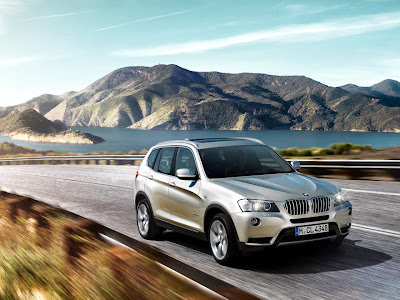

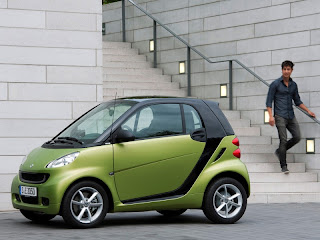 2011 smart fortwo
2011 smart fortwo 2011 smart fortwo Interior View
2011 smart fortwo Interior View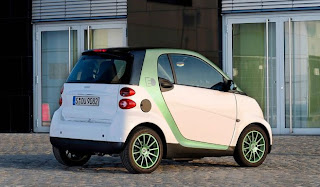 2011 smart fortwo Rear View
2011 smart fortwo Rear View 2011 Mercedes Benz CL63 AMG Interior View
2011 Mercedes Benz CL63 AMG Interior View 2011 Mercedes Benz CL63 AMG Interior View
2011 Mercedes Benz CL63 AMG Interior View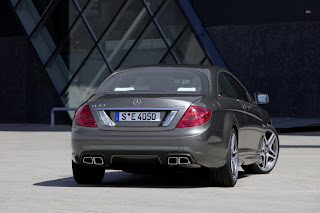 2011 Mercedes Benz CL63 AMG
2011 Mercedes Benz CL63 AMG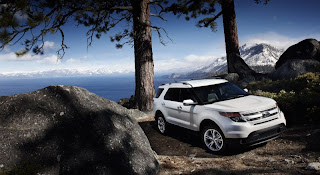 2011 Ford Explorer
2011 Ford Explorer 2011 Ford Explorer Picture
2011 Ford Explorer Picture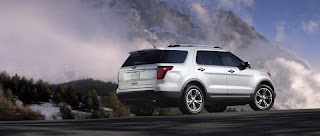 2011 Ford Explorer Rear View
2011 Ford Explorer Rear View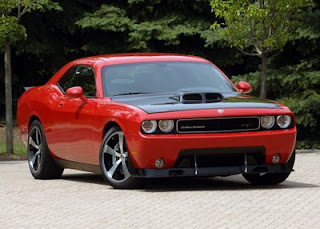 2010 Mopar Dodge Challenger Picture
2010 Mopar Dodge Challenger Picture 2010 Mopar Dodge Challenger Picture
2010 Mopar Dodge Challenger Picture 2010 Mopar Dodge Challenger
2010 Mopar Dodge Challenger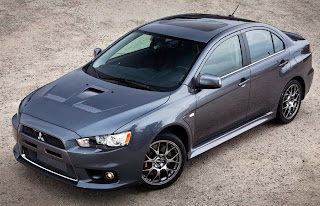 2010 Mitsubishi Lancer Evolution SE Picture
2010 Mitsubishi Lancer Evolution SE Picture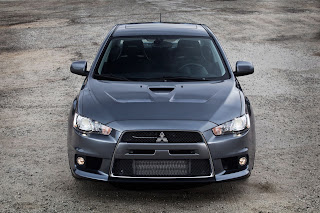 2010 Mitsubishi Lancer Evolution SE Picture
2010 Mitsubishi Lancer Evolution SE Picture 2010 Mitsubishi Lancer Evolution SE
2010 Mitsubishi Lancer Evolution SE 2010 Mitsubishi Lancer Evolution GSR
2010 Mitsubishi Lancer Evolution GSR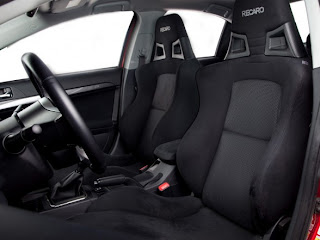 2010 Mitsubishi Lancer Evolution GSR Inside
2010 Mitsubishi Lancer Evolution GSR Inside 2010 Mitsubishi Lancer Evolution GSR Rear View
2010 Mitsubishi Lancer Evolution GSR Rear View










 2011 Maserati Quattroporte Sport GT S
2011 Maserati Quattroporte Sport GT S 2011 Maserati Quattroporte Sport GT S Interior View
2011 Maserati Quattroporte Sport GT S Interior View 2011 Maserati Quattroporte Sport GT S Rear Angel View
2011 Maserati Quattroporte Sport GT S Rear Angel View






